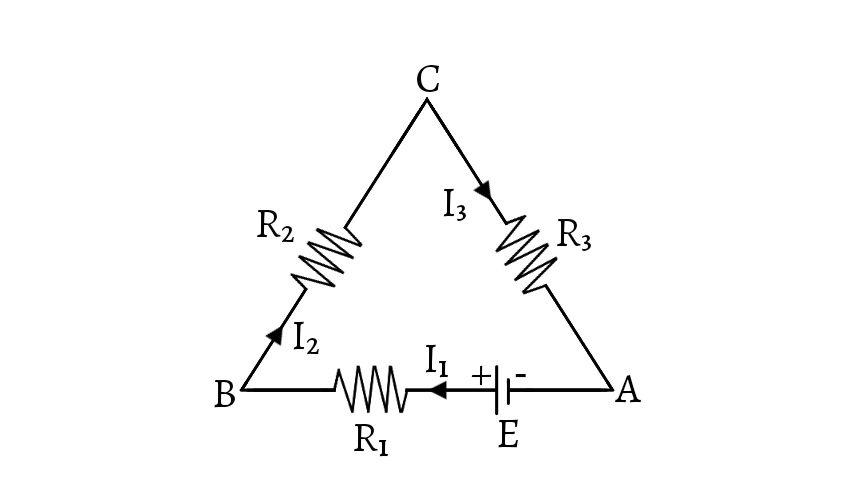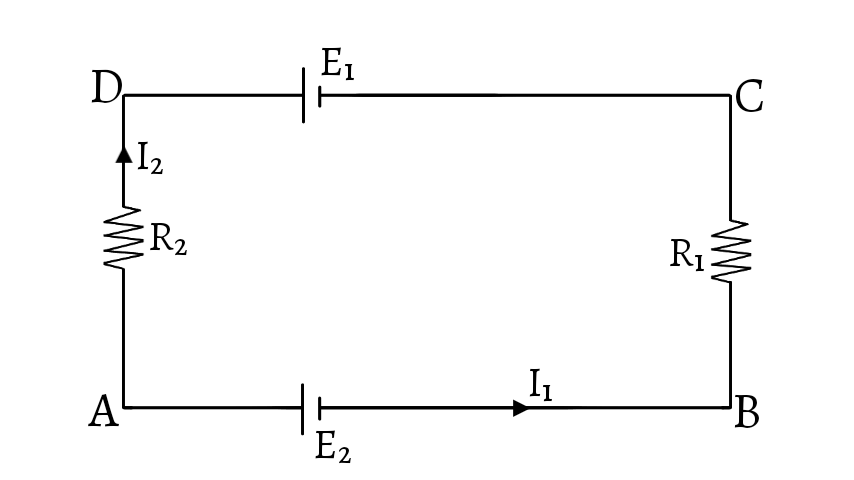In simple circuit, we can apply Ohm’s law for determining unknown values. But in complex circuit, Ohm’s law is not sufficient. To solve such problems of complex dc circuit, Gustav Robert Kirchhoff extended Ohm’s law and gave two laws in 1842 which are called Kirchhoff’s Circuit Laws. These laws are given below;
Kirchhoff’s First Law or Kirchhoff’s Current Law (KCL)
This law states that in any network the algebraic sum of currents at any common point is zero. This law is also called point law or junction law.

Consider a junction $O$ in a network. The currents $I_1$, $I_2$ and $I_3$ are flowing towards the point $O$ while the currents $I_4$ and $I_5$ are flowing away from the point $O$. The current flowing towards the junction is taken as positive while the current flowing away from the junction is taken as negative. Thus, the currents $I_1$, $I_2$ and $I_3$ are taken as positive while the currents $I_4$ and $I_5$ are taken as negative. According to KCL, \[\sum I=0\] \[I_1+I_2+I_3-I_4-I_5=0\] \[I_1+I_2+I_3=I_4+I_5\] Sum of currents flowing towards the point $O$ $=$ Sum of currents flowing away from the point $O$
Thus, Kirchhoff’s first law can also be stated as the sum of currents flowing towards the junction is equal to the sum of currents leaving from the junction. This law is simply a statement of law of conservation of charge.
Kirchhoff’s Second Law or Kirchhoff’s Voltage Law (KVL)
This law states that in a closed circuit, the algebraic sum of the products of currents and resistances is equal to the algebraic sum of emf of the circuit. This law is also called loop law or mesh law.

Consider a closed circuit $ABCA$ whose sides $AB$, $BC$ and $CA$ are carrying currents $I_1$, $I_2$ and $I_3$ respectively. The resistances of the sides $AB$, $BC$ and $CA$ are $R_1$, $R_2$ and $R_3$ respectively. There is a cell of emf $E$ in the circuit. According to KVL, \[\sum E=\sum IR\] \[E=I_1R_1+I_2R_2+I_3R_3\] If there is no cell in the circuit, then, \[ I_1R_1+I_2R_2+I_3R_3=0\] This law represents the law of conservation of energy.
Sign Convention
1. If we move from positive terminal to the negative terminal of the cell, the emf is taken as negative while if we from negative terminal to the positive terminal of the cell, the emf is taken as positive.
2. If a resistor has current in opposite direction with respect to our path, then IR is positive while if the resistor has current in the same direction as our path, then IR is negative.

If we take the loop in anticlockwise direction, then \[E_1+I_2R_2-E_2-I_1R_1=0\] \[E_1-E_2=I_1R_1-I_2R_2\text{ __(1)}\] If the loop is in clockwise direction, then \[-E_1+I_1R_1+E_2-I_2R_2=0\] \[I_1R_1-I_2R_2=E_1-E_2\text{ __(2)}\] The equations $(1)$ and $(2)$ are equivalent.
Mesh and Loop
Mesh: Mesh is a path which does not contain any other paths within it.
Loop: Loop is a path which contains two or more than two meshes.
Next: Wheatstone Bridge
